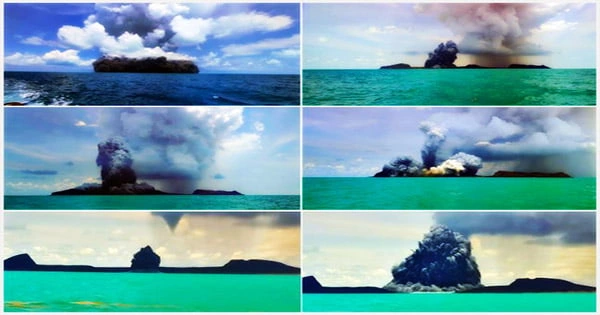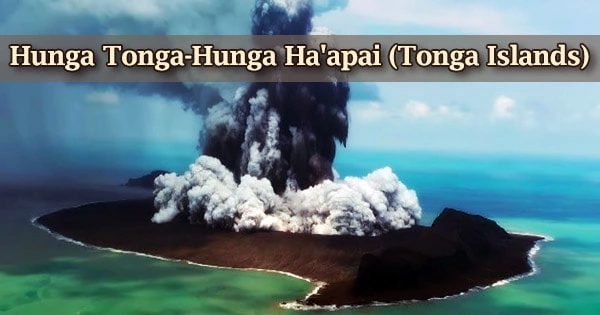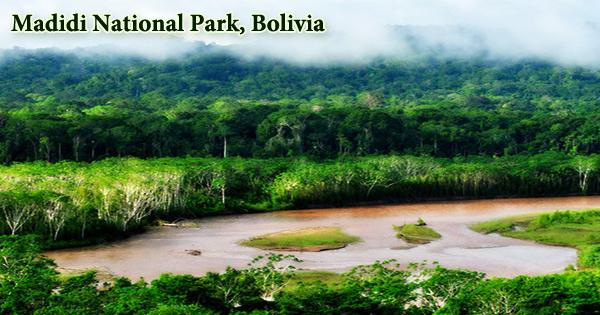Hunga Tonga–Hunga Ha’apai is a South Pacific undersea volcano located 30 kilometers (19 miles) south of Fonuafoou and 65 kilometers (40 miles) north of Tongatapu, Tonga’s largest island. Since 2009, the volcano had erupted on several occasions. The most recent eruptions began in late December 2021, when a series of Surtseyan eruptions built up and altered the island while spewing tephra and volcanic gases.
In the western South Pacific Ocean, west of the Kingdom of Tonga’s main inhabited islands, the Hunga Tonga-Hunga Ha’apai volcano includes small islands and shallow submerged reefs along the caldera rim of a much larger submarine structure. The Tofua Arc, which is part of the broader Tonga-Kermadec volcanic arc, has 12 known submerged volcanoes.
It is created by the subduction of the Pacific Plate beneath the Indo-Australian Plate, and is part of the extremely active Kermadec-Tonga subduction zone and its accompanying volcanic arc, which stretches from New Zealand north-northeast to Fiji. It’s around 100 kilometers (62 miles) above a seismically active zone. The volcanic stratigraphy on the island revealed evidence of at least two caldera-forming eruptions (Brenna et al, 2022); five eruptions have been observed since 1900.
The volcano rises 2,000 meters above sea level and has a caldera that was 150 meters below sea level and 4 kilometers wide on the eve of the 2022 eruption. The twin uninhabited islands of Hunga Tonga and Hunga Ha’apai, which are located on the caldera’s northern and western rims, are the volcano’s sole notable above-water features.
In 1912, 1937, 1988, 2009, and 2014-2015, Hunga Tonga-Hunga Ha’apai experienced eruptions. On the SE caldera rim, the eruptions of 1912 and 1937 occurred in a set of shallow reefs about 3 km south of Hunga Tonga island (Brenna et al., 2022). In June 1988, fishermen saw an eruption near the same reefs that produced enormous amounts of dense steam, tephra, and incandescent ejecta.
Tephra erupted from three vents that were aligned SW-NE, but no evidence of an island above sea level remained after the activity stopped. Its most recent eruption, in January 2022, resulted in a tsunami that hit Japan and the Americas, as well as a volcanic plume that stretched 58 kilometers (36 miles) into the atmosphere.

According to preliminary estimates, the explosion was the world’s greatest volcanic eruption since Mount Pinatubo erupted in 1991. In the late 11th or early 12th century, Hunga Tonga–Hunga Ha’apai had a previous significant explosive eruption (possibly in 1108). The volcanic island rose from the water for the first time in January 2015. Hunga Tonga-Hunga Ha’apai was formed when eruptive activity built up ash around a new volcanic cone, connecting the older, more lava-based islands of Hunga Tonga and Hunga Ha’apai.
The volcano’s undersea base measures about 20 kilometers in circumference and rises 2,000 meters to the sea surface. The caldera of the volcano was around 150 meters below sea level and measured 4 × 2 kilometers before the 2022 eruption. Volcanic materials from past eruptions covered its northern and southern parts. The two subaerial islands were around 1.6 km (0.99 mi) distant and 2 km (1.2 mi) long before the 2015 eruption.
A new eruption, which lasted several days, was witnessed by airplane passengers in the area in March 2009. From two different vents that rose as high as 7.6 km height and drifted NE, black ash-laden eruption plumes accompanied dense steam plumes that rose vertically and extended across the ocean surface. Hundreds of kilometers away, pumice rafts drifted.
A new vent had developed above sea level by the time activity ceased, enlarging Hunga Ha’apai island by roughly 1 km to the south. The new vent’s crater was roughly 350 meters in diameter and began to erode soon after it was generated. The second vent was located immediately W of the island. By November 2013 there was no longer any trace of the vents from the 2009 eruption.
The eastern island is Hunga Tonga, and the western island is Hunga Ha’apai. They are part of Tonga’s Haapai group of islands, an island arc formed where the Pacific Plate subducts beneath the Indo-Australian Plate at the convergent boundary. Satellites were able to see signs of the island’s recent death in the oceans. The three natural-color photos above illustrate how sediment, ash, pumice, and potentially ongoing volcanic emissions colored the lake in the days following the eruption.
Before the 2022 eruption, the highest point in the former Hunga Tonga reached an elevation of 149 m (489 ft), while Hunga Haʻapai was only 128 m (420 ft) above sea level. Neither island was large: before they were connected in 2015, each island was about 2 km (1.2 mi) long, with Hunga Tonga being roughly 390,000 m2 (0.15 sq mi) and Hunga Haʻapai 650,000 m2 (0.25 sq mi) in size.
A pyroclastic cone over 100 meters high was constructed in the area between Hunga Ha’apai and Hunga Tonga islands during an eruption in December 2014-January 2015; it first created a separate island but was eventually linked to the others due to water moving the unconsolidated tephra. Fishermen first saw the eruption in mid-December, and on December 30, a kilometer-high steam plume could be seen from Tongatapu.
On January 6, 2015, plumes of black ash and billowing white clouds were reported at a height of less than 2 kilometers. During the 12-14 January period, activity accelerated, resulting in 6-kilometer-high plumes and the cancellation of multiple airline flights. Following the 2015 eruption, the smaller Hunga Tonga island, located 1.5 km (0.93 mi) northeast of Hunga Haapai, was connected to the crater by a 380 m (1,250 ft) wide tombolo, and additional sandy deposits had formed near the crater’s southern end.

The islands are mentioned in Tongan mythology as one of the few unexploited islands that were cast down from heaven to settle on Earth. They were known as the “jumping islands” by Tongans (i.e. suffer earthquakes). According to the Matangi Tonga Online news website, Tonga’s head geologist, Taaniela Kula, an ash eruption from Hunga Tonga-Hunga Ha’apai began at around 0935 local time on December 20, 2021.
The eruption generated a large air shock wave that traveled at around 300 meters per second (1,000 feet per second). The explosion caused property damage near the eruption, including shattered windows. The Tonga Meteorological Services issued a tsunami warning shortly after 5:30 p.m., and the tsunami flooded coastal areas of Tonga. A 3.9 ft (1.2 m) tsunami was observed in Nukuʻalofa, Tonga, and a 2.0 ft (0.61 m) one in American Samoa.
Between 2220 and 2230 that evening, a minor ash plume was reported at 5-7 km height, 5-10 km NE of the volcano. A tiny ash plume was seen at 8 km altitude around 15 km north of the volcano shortly after midnight on 4-5 January, and it disappeared after about 30 minutes; this was the last ash emission observed during this sequence of events.
















